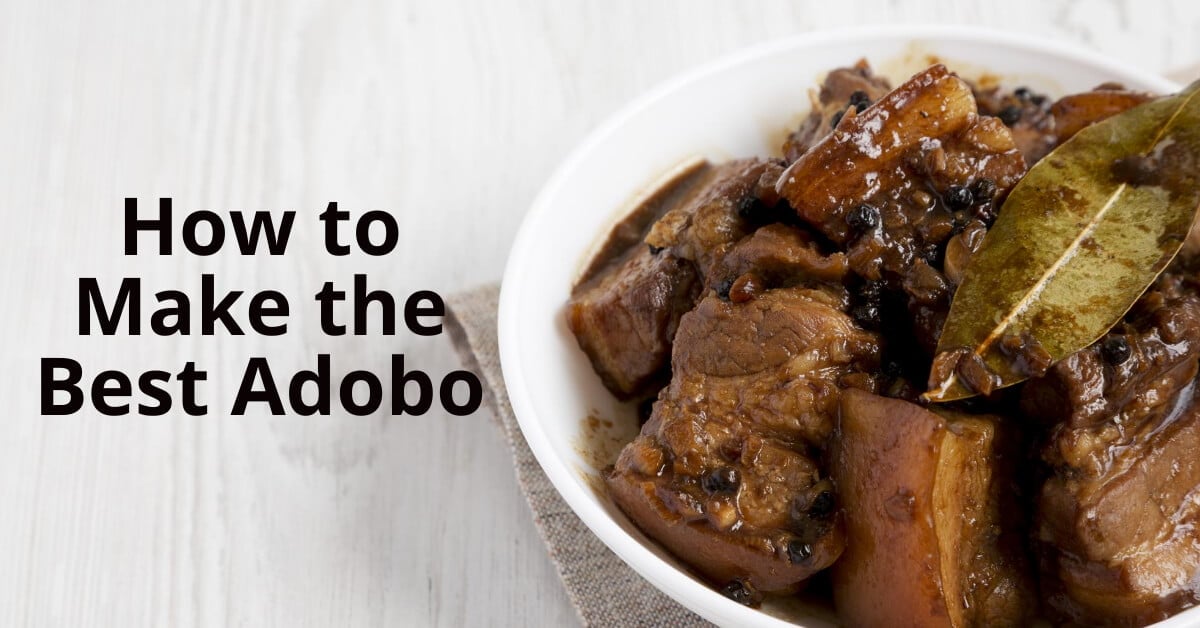Adobo is one of the most popular Filipino dishes, and for good reason. Its savory and tangy taste is hard to resist, and it can be made with a variety of meats, from chicken to pork to beef. Adobo is a dish that has been passed down through generations, and every Filipino family has their own unique recipe. In this article, we will guide you through how to make the best adobo, complete with a recipe and tips for the perfect Pinoy dish.
What is Adobo?
Adobo is a traditional Filipino dish that is made with meat, usually chicken or pork, and marinated in a mixture of vinegar, soy sauce, garlic, and other seasonings. The meat is then simmered in the marinade until it is cooked and the flavors have melded together. Adobo is a versatile dish that can be eaten on its own or served with rice or bread.
Ingredients for Adobo:
- 2-3 lbs of chicken or pork, cut into pieces
- 1/2 cup of vinegar (try pinakurat vinegar)
- 1/2 cup of soy sauce
- 1 big head of garlic, minced
- 1 teaspoon of black peppercorns
- 4 bay leaves
- 1/2 cup of water
- 2 tablespoons of cooking oil
Step-by-Step Guide to Making Adobo:
- In a large pot or pan, heat the cooking oil over medium-high heat. Add the garlic and cook until it is fragrant and slightly browned.
- Add the chicken or pork to the pot and brown on all sides.
- Pour in the soy sauce, vinegar, water, black peppercorns, and bay leaves. Bring the mixture to a boil.
- Lower the heat and let the meat simmer in the sauce for 30-40 minutes or until the meat is cooked and tender. Stir occasionally.
- Once the meat is cooked, remove it from the pot and set it aside.
- Turn up the heat and let the sauce simmer until it thickens and reduces in volume by about half.
- Return the meat to the pot and stir it into the sauce.
- Serve hot with rice or bread.
Tips for Making the Best Adobo:
- Use bone-in meat: Using bone-in meat, such as chicken thighs or pork chops, will add extra flavor to your adobo.
- Marinate the meat: Marinating the meat overnight will allow the flavors to penetrate the meat and make it more tender.
- Use a combination of vinegars: Using a combination of rice vinegar and apple cider vinegar will give your adobo a more complex flavor. You can also try using Pinakurat or Suka WayKurat
- Add sugar: Adding a tablespoon of brown sugar to the marinade will balance out the acidity of the vinegar and soy sauce.
- Cook low and slow: Cooking the meat on low heat for a longer period of time will allow the flavors to meld together and make the meat more tender.
FAQs:
Q: Can I use other types of meat for adobo? A: Yes, you can use other types of meat, such as beef or seafood, for adobo. Just adjust the cooking time and seasoning accordingly.
Q: Can I add vegetables to adobo? A: Yes, you can add vegetables, such as potatoes or green beans, to adobo. Just add them to the pot during the last 15-20 minutes of cooking.
Q: How long can I store adobo in the refrigerator? A: You can store adobo in the refrigerator for up to 3-4 days.
Q: How do I reheat adobo? A: You can reheat adobo on the stovetop or in the microwave. If reheating on the stovetop, add a bit of water to the pot and simmer the adobo until it is heated through. If reheating in the microwave, cover the dish and microwave on high for 1-2 minutes.
Q: Can I make adobo in a slow cooker? A: Yes, you can make adobo in a slow cooker. Just follow the same steps for marinating the meat and browning it in a pan. Then, transfer the meat and marinade to a slow cooker and cook on low for 6-8 hours or on high for 3-4 hours.
In conclusion, adobo is a dish that has been loved by Filipinos for generations. Its unique blend of flavors and tender, juicy meat make it a favorite among many. By following our step-by-step guide and tips for making the best adobo, you can enjoy this classic Filipino dish in the comfort of your own home.
So why not give it a try? Invite your friends and family over and show off your newfound adobo-making skills. You can even experiment with different meats and seasonings to make it your own.
Cooking adobo is not just about preparing a delicious meal, but it is also a great way to connect with your Filipino heritage and share a piece of your culture with others. So go ahead, make some adobo, and enjoy this timeless Pinoy dish!
























